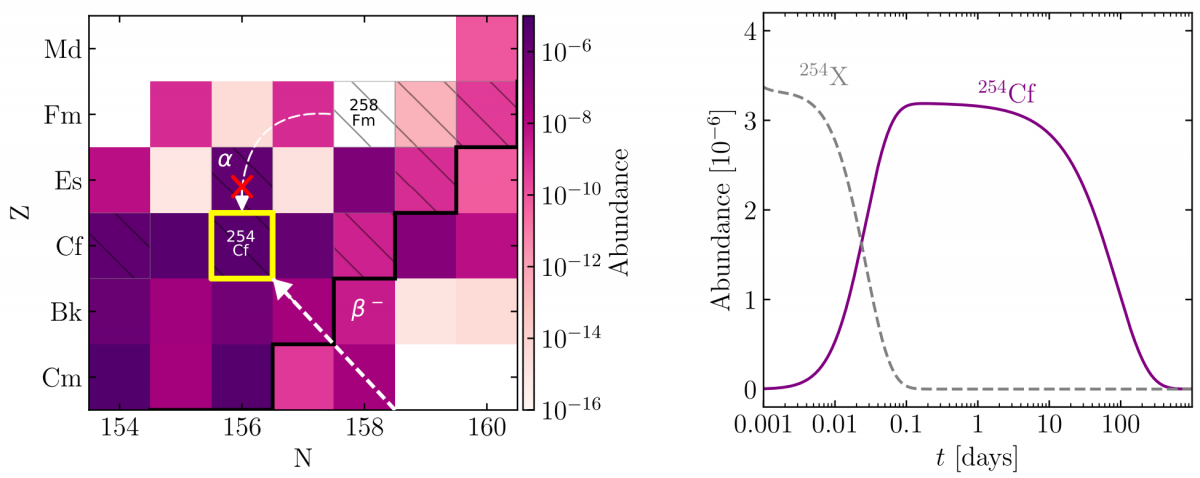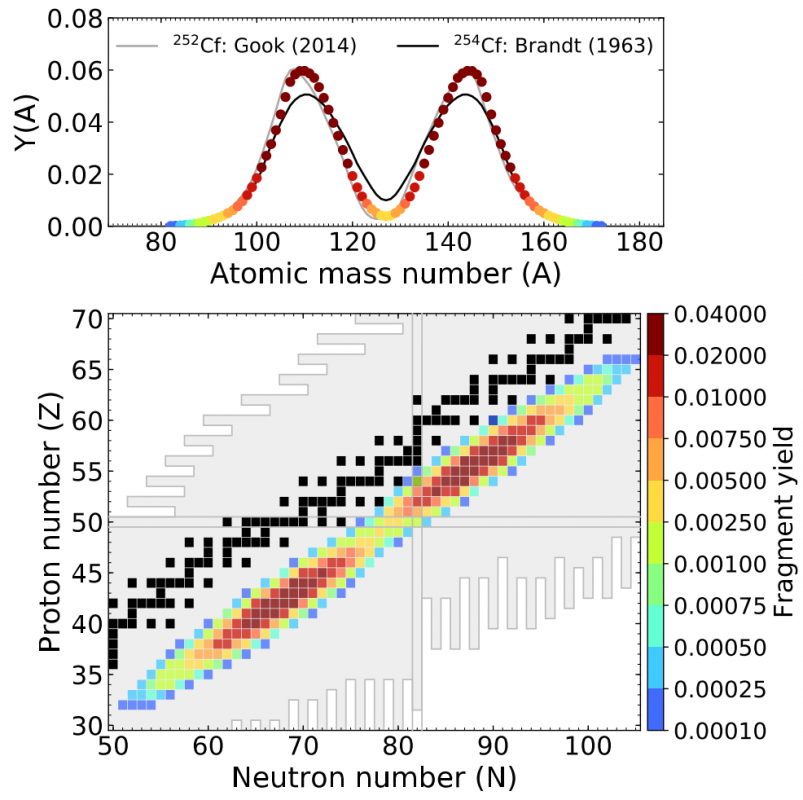Light Curve Observation and Simulation from GW170817 Kilonova Series
 The collaboration led by FIRE(Fission in R-process Elements) members from LANL(Los Almos National Lab)/NC State/Notre Dame has explored several issues concerning the nuclear physics of Cf-254 production in NSM’s observation for the first time. They model r-process nucleosynthesis using PRISM(Version 2.0, by LANL/Notre Dame) with all relevant nuclear reaction channels and reheating of the ejecta handled self-consistently. Fission from neutron-induced, β-delayed and spontaneous(SF) channels are also included.
The collaboration led by FIRE(Fission in R-process Elements) members from LANL(Los Almos National Lab)/NC State/Notre Dame has explored several issues concerning the nuclear physics of Cf-254 production in NSM’s observation for the first time. They model r-process nucleosynthesis using PRISM(Version 2.0, by LANL/Notre Dame) with all relevant nuclear reaction channels and reheating of the ejecta handled self-consistently. Fission from neutron-induced, β-delayed and spontaneous(SF) channels are also included.

The fission fragment yields of Cf-254 are constructed with a hybrid method that combines both theoretical and experimental data, see Figure.1. Due to the anomalously long half-life of this isotope and the efficiency of fission thermalization compared to other nuclear channels, it is identified that this single isotope, Cf-254, which has a particularly high impact on the brightness of electromagnetic transients associated with mergers on the order of 15 to 250 days, see Figure 2.
The production of Cf-254 implies the nucleosynthesis of at least some actinide material. Thus, a combined approach of improving experimental knowledge in this region along with the coupling of late-time light curves with nucleosynthetic simulations have the potential to play a major role in cementing the origin of the heaviest r-process elements. This work has been accepted for publication by APJL.
Further Reading: arXiv:1806.09724

